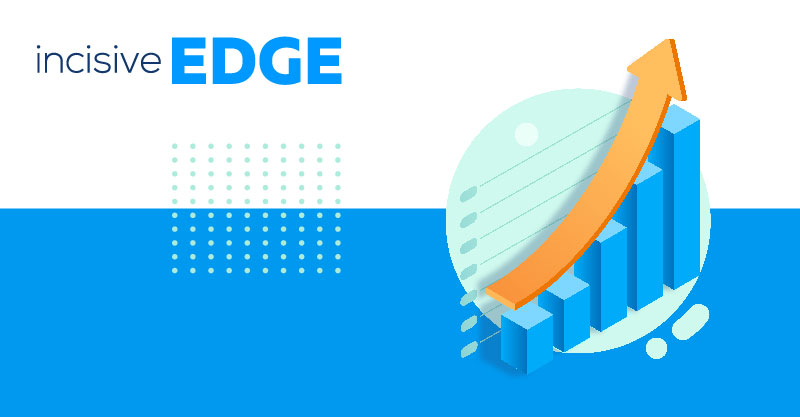Ever felt like you were running faster and faster just to stand still? Well you may well have a problem with your customer retention strategy in your B2B business
Are you solely concentrating on acquiring new customers to fill your lead funnel and sales pipeline? While attracting new business is crucial, neglecting customer loyalty and existing customers will hinder your progress. Gathering and utilising customer feedback is essential for nurturing and retaining clients effectively.
Think of a body builder who spends huge amounts of time sculpting his muscles in the gym and tanning himself so he can show off how great he looks, but then goes and smokes 60 cigarettes a day and drinks heavily. Great on the outside, but the inside is lacking.
Importance of Customer Retention for Sustainable Growth
If customer retention isn’t a key focus for your business, it may actually be dying a slow, all-be-it, imperceptible death.
“The commercial equation also verifies the need to build strong customer retention strategies and principles into your business. The facts are that it costs seven times as much to win a new client as it does to keep an existing one”.
New and existing clients both pay you money for your products and services, yet the returns on those that already know and trust you can be far greater.
Dependent on your business model, it will also not be uncommon for the percentage of profit on a transaction to be on a steep upward trajectory the more often you sell to a particular client.
Perhaps you are offering a SaaS product with a Freemium model? In this instance customer retention and moving your customer in expansion is crucial.
Regardless of your business model, monetising your customer service relationship becomes easier the better you know what your client actually wants and needs. Solving their pain points with your solutions.
Check out the following blogs to learn more about B2B customer retention:
- 5 Inbound Marketing Strategies to Help You Retain Customers
- How to Increase Retention with Smart Pricing Strategies
- 5 Ways Customer Marketing Can Improve Your Business
Leveraging Client Knowledge Customer Service Monetisation
After kick-starting the relationship with discounted deals or loss leaders, it's crucial to focus on loyal customers and increase customer retention, and customer satisfaction. As clients trust you and integrate your commercial relationship into their business, they may wish to increase spending due to their confidence in the outputs, positively impacting their own bottom line and return on investment.
In fact, this is often the case with our clients at Incisive Edge where we provide digital and inbound marketing services to our clients to drive their market share and increase revenues and ROI.
These clients may work with us over a quarter or two to verify the qualified lead data generated by our activity into their business and then reinvest into the revenue generating machine that we have created for them once the ratios of marketing spend versus sales return have been established and can be relied upon.
It’s a great model and builds significant trust.
In essence, there are only three ways to make more money in your business:
- Increase the number of clients making a transaction
- Increase the frequency of these transactions
- Increase the value of each transaction
Clearly two out of three of these methods, increasing frequency and increasing value, are inextricably linked to B2B customer retention. They are the basis of increasing the life time value (LTV) of your client.
Understanding this metric in your business (and focusing on driving it up) is vital to understanding your allowable cost of client acquisition. Focusing on profit and a strong customer retention strategy is fundamental to delivering this.
Leveraging Retained Clients for Organic Growth
When it comes to increasing the overall number of clients, it is important to remember that your retained client base is a vital part of your marketing machine.
Word-of-mouth marketing and recommendations can drive new customers but don't forget the importance of customer retention rates and fostering strong customer relationships. If a client includes your service in their dealings with another party, it may lead them to work with you directly. This is particularly relevant for SaaS businesses providing advantages which can require the customer of your customer to engage.
A simple example would be viewing a file share sent from your platform to a company your customer is linked with. This will create viral attraction and build traction with a wider market as the need is created to access your services.
Of course, not every client can be retained for a variety of reasons, often completely outside of your control.
The key is to ensure that your customer retention rate plateaus at some point and doesn’t have an elastic limit that ensures you will always lose a given client at some point (however far in the future). If this is an inherent feature in your business, then customer churn will arm-wrestle with your new business acquisition rate and growth will inevitably decline.
 How can Customer retention be improved?
How can Customer retention be improved?
Get to the point quickly.
Ensure that you reveal the core value that you offer to your customers and clients as quickly as possible. Let them experience this fast.
This is a crucial part in the prolific growth of Facebook.
The social media platform's key value is evident in the average engagement of users upon joining, with seven friends in ten days. This highlights the effectiveness of customer acquisition and the onboarding process, encouraging users to persist, build their profile, and retain customers by growing their network.
Once this enlightenment has occurred and your customer understands what you are all about, it is not simply enough to sit back and say ‘they get us – job done. They will keep spending because what we do works for them’
Humans don’t work like this and it is fundamental mistake to disassociate B2B buyers from the human characteristics that define them as people in everyday life.
Fostering Customer Habits through Educative Engagement
The really hard work starts at this point as you need to educate your users or customers to form habits which are predicated on working with you – whatever form that may take.
They may well understand your core value, but unless you make it simple, encourage and reward them to keep working with you, whether this is engaging with an app following installation, or building your offering into their daily/ weekly workstream, then you will never change habits and forge the neural networks in their brains that create consistent behaviour.
“Your key to growth through customer retention is nothing short of training repetition.”
It is also a job of work that is never stated. Driving solid retention requires you to keep reminding your customer base of the core value you offer on a regular basis.
It requires you to place this front and centre for them at every opportunity. It also requires you to listen to their wants and needs and evolve your offering to anticipate their requirements as these can develop and pivot from your core value.
This can range from developing new functionality to delight your customer base, or holding regular envisioning sessions with clients to help them chart where their business is going and how you can help to enable this (not just service reviews where you are looking in the rear view mirror at work that has been completed and already paid for).
A word of warning however, is to check that adding new functionality or service extensions doesn’t end up removing you too far from your core value or make what you do too complicated.
If this proves to be the case, you could end up actually increasing customer attrition by changing the way in which customers want to engage, rather than increasing retention.
Creating Retention Hooks for Continuous Improvement
The most effective method of improving customer retention is through driving a relentless policy of continuous and consistent improvement across each aspect and stage of your process.
Consider where most risk lies in not retaining a new client.
This is probably in the very first element of demonstrating your core value. Deploy greater resource and effort at this stage. But don’t make them feel abandoned later in the cycle. Think of the dissatisfaction of established bank account holders who don’t get the same great offers and attention that switchers are offered.
Work to create retention hooks right across the lifetime of the relationship and reward the use of these as customers engage.
LinkedIn use a competitive approach for example, where you are reminded of how you compare to others in your network and rewarded when you improve your profile following simple suggestions on how to do so.
It also plays on inquisitive human nature by hinting at who may have been viewing your profile and upselling access to enhanced information and control. It makes you feel invested in the platform and reminder emails keep bringing you back to login for more.
Reengaging Past Customers to Revive Business Relationships
B2B customer retention marketing isn’t just for those already held within your ‘tractor beam’ of engagement however.
We mentioned earlier how clients can drop out of the relationship for reasons beyond your control. But if someone has spent money with you before, then there is a pre-existing relationship to leverage and reignite.
If they left through reasons of dissatisfaction, then this provides an opportunity to make things right. To learn and improve your offering.
If they left for other reasons such as time, resource or budget, then reaching out, reminding and clearly explaining the core value you offer may well bring them back to you, as factors may now be more favourable. This time around they may end up becoming one of your most loyal and committed customers as conditions precipitate.
As with many of the winning marketing solutions that we advocate, the answers to stronger retention lies within the data.
“Each element of your process needs to be clearly segmented so you can understand how and why there is attrition in your process.”
Analysing Data for Improved Customer Retention Strategies
One factor that we found when undertaking this process ourselves, is that the people who download our thought leadership papers and marketing guides and leave a personal rather than a corporate email are less likely to accept an inbound audit than those who do. There may be other factors involved in this, but we can change this process to drive behaviours
Look at factors such as the number of communications sent on initialisation. Or understand factors such as frequency of engagement following initial download or how many questions an Account Manager is asked by the client during an on-boarding process. Are there segments of behaviours or personas that are retaining or churning more?
These are all salient factors and any micro improvement in the process which may permit, enable or negate such action can deliver significant incremental improvements.
It is widely accepted that on your website you should be conducting multivariate or A/B testing to improve your Conversion Rate Optimisation. Take the same robust data-driven approach to your retention processes and systems to ensure continuous growth.
It may be the format of education you provide needs proliferating (video & infographics rather than text alone), or it may be the experience that the client goes through following your sales process needs focus (personalised product dashboards, in app experiences dependent on gender, or even dedicated account managers spending time in the client office).
Back to You
Don’t take your B2B customer retention model for granted.
Just because you have good feedback on your products and services and new business is going well, you cannot afford not to fight for continued growth by reducing attrition at every turn.
“Without a strong customer retention programme in place in your B2B or tech company, it is the equivocal position to pumping petrol into your car for a long journey, when you already know you have a leak in the tank.”
You’ll keep moving forwards, but unless the amount you keep filling up with is more than it takes to run the engine and counter the spillage, you will come to a halt or run out of money at some point along the road.
Establish a consistent process and take a granular, data-driven and segmentation-led approach to delivering perpetual relentless improvement in your B2B customer retention programme.








